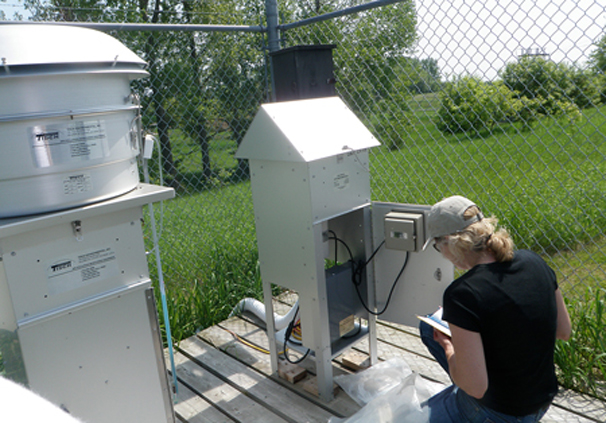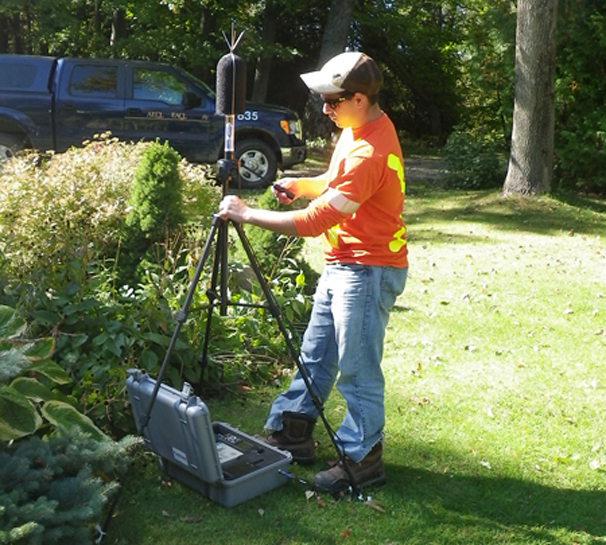
Monitoring
Air Quality
What is the project monitoring?
- Dust for radiological and non-radiological contaminants
- Radon and long-lived alpha particles in air
Click here for information
on Dust Monitoring
Why is the project monitoring air quality?
- To ensure measures to reduce dust and radon at work sites and the long-term waste management facility are effective
What measures is the project taking to protect air quality?
- Take immediate corrective actions based on physical observation
- Water roads and apply other dust suppressants at excavation areas
- Reduce distances heavy machinery travels over soil
- Minimize the surface area of exposed soil
- Install fencing or other barriers around work areas, where possible
- Suspend work during periods of high wind or other inclement weather
- Tarp, monitor and clean all trucks transporting waste
- Cover exposed work areas at the end of each day
- Seed and mulch completed work surfaces as soon as possible
How will the project monitor air quality?
- Measure the amount of dust in air through continuous “high-volume” air sampling
- Conduct weekly analysis of air sampler filters at work sites and off-site along haul routes for radiological contaminants (radium-226, thorium-230, uranium) and non-radiological contaminants (eg. arsenic, cobalt)
- Use hand-held dust monitors at excavation sites to provide immediate results
- Collect “real time” temperature, precipitation, wind speed and wind direction data at the project weather station
- Collect daily long-lived alpha samples downwind from work sites to measure radioactivity in air
- Measure radon in air through E-PERM sampling

Monitoring
Noise & Odour
What is the project monitoring?
- Noise at work sites and along transportation routes
- Odour upwind and downwind of Port Hope Project Highland Drive Landfill and Port Hope Harbour
- Why is the project monitoring noise and odour?
- To ensure measures taken to reduce noise and odour are effective
What measures is the project taking to control noise and odour?
Noise control:
- Construct a berm and other landscaping treatments along the internal access road to the long-term waste management facility
- Install temporary construction barriers at sites where noise could be elevated
- Notify residents and discuss opportunities to reduce disturbance when work could result in noise over 6 decibels
- Limit the number of machines operating simultaneously at the long-term waste management site to ensure average noise levels are below 70 decibels at residential locations
- Maintain mechanical equipment in good working order (e.g. mufflers)
- Comply with municipal and provincial sound emission standards
- Enforce speed limits along transportation routes
- Prevent tailgate and tray banging and enforce speed reductions for empty dump trucks at construction sites and on local roads
Click here for the
Port Hope Project Noise Impact Assessment Fact Sheet
Click here for
The Executive Summary of the Port Hope Project Noise Impact Assessment
Odour control:
- Conduct Port Hope Project Highland Drive Landfill cleanup during winter
- Minimize the size of exposed work surfaces at the landfill
- Cover odour-generating materials with clean soils and apply odour suppressants
How is the project monitoring noise and odour?
Noise:
- Measure noise continuously at the long-term waste management facility
- Take spot sound measurements at all excavation sites and along waste transportation
Odour:
- Sample and analyze harbour sediment and landfill gas at a qualified odour laboratory prior to excavation
- Conduct daily monitoring upwind and downwind of Port Hope Project Highland Drive Landfill during periods when municipal solid waste is being excavated
